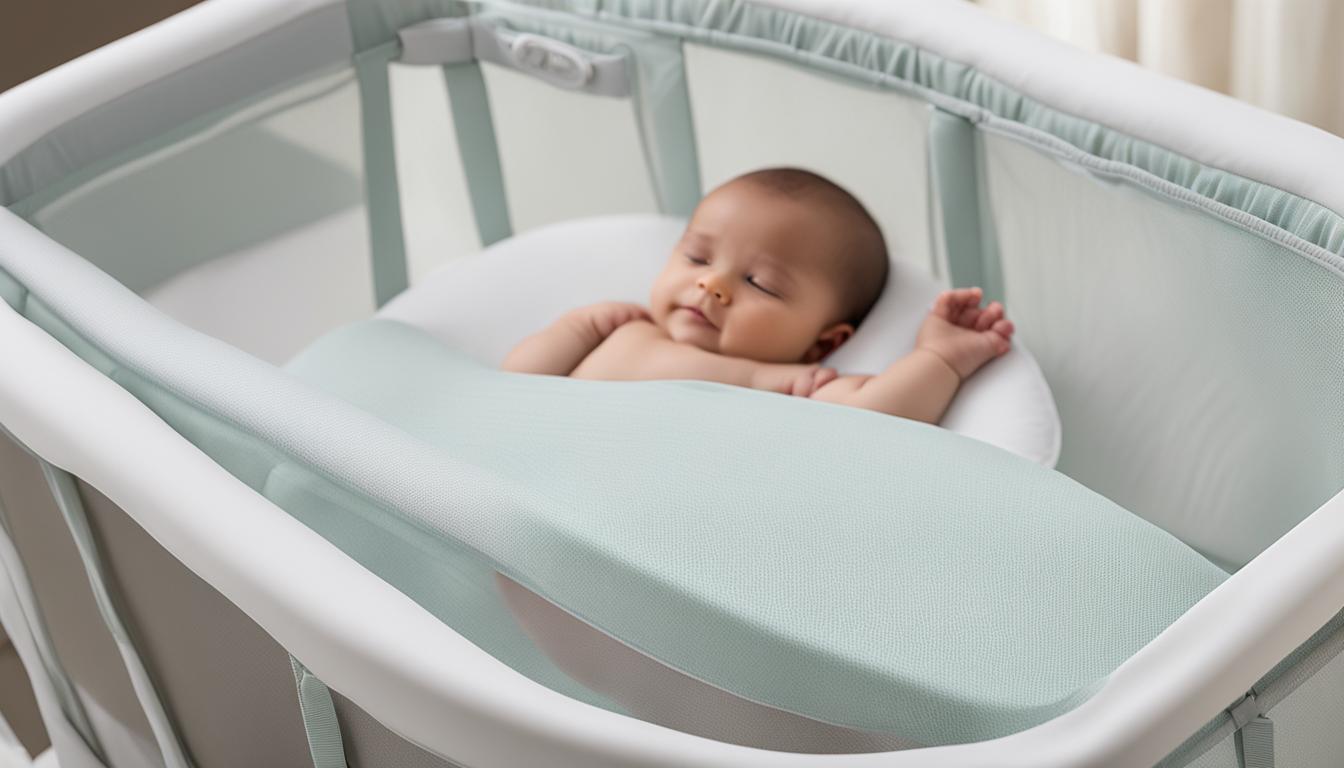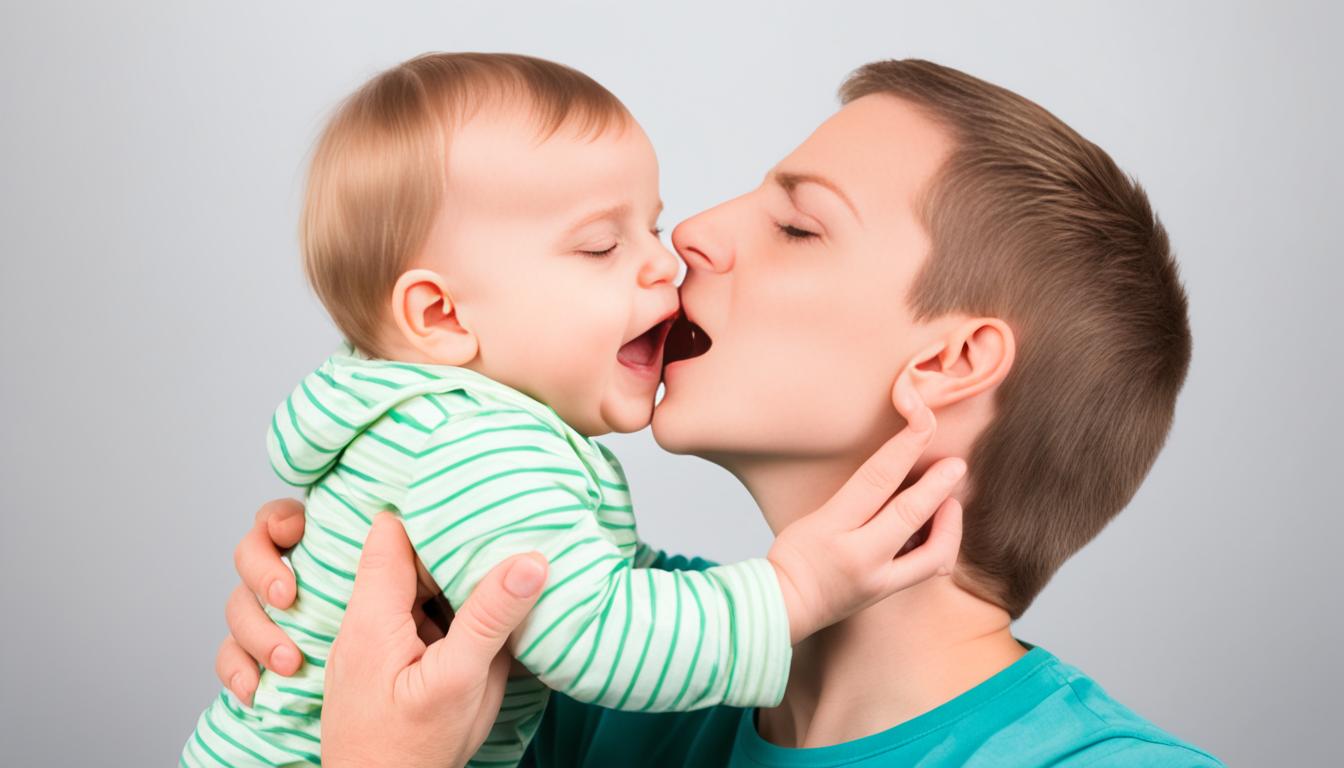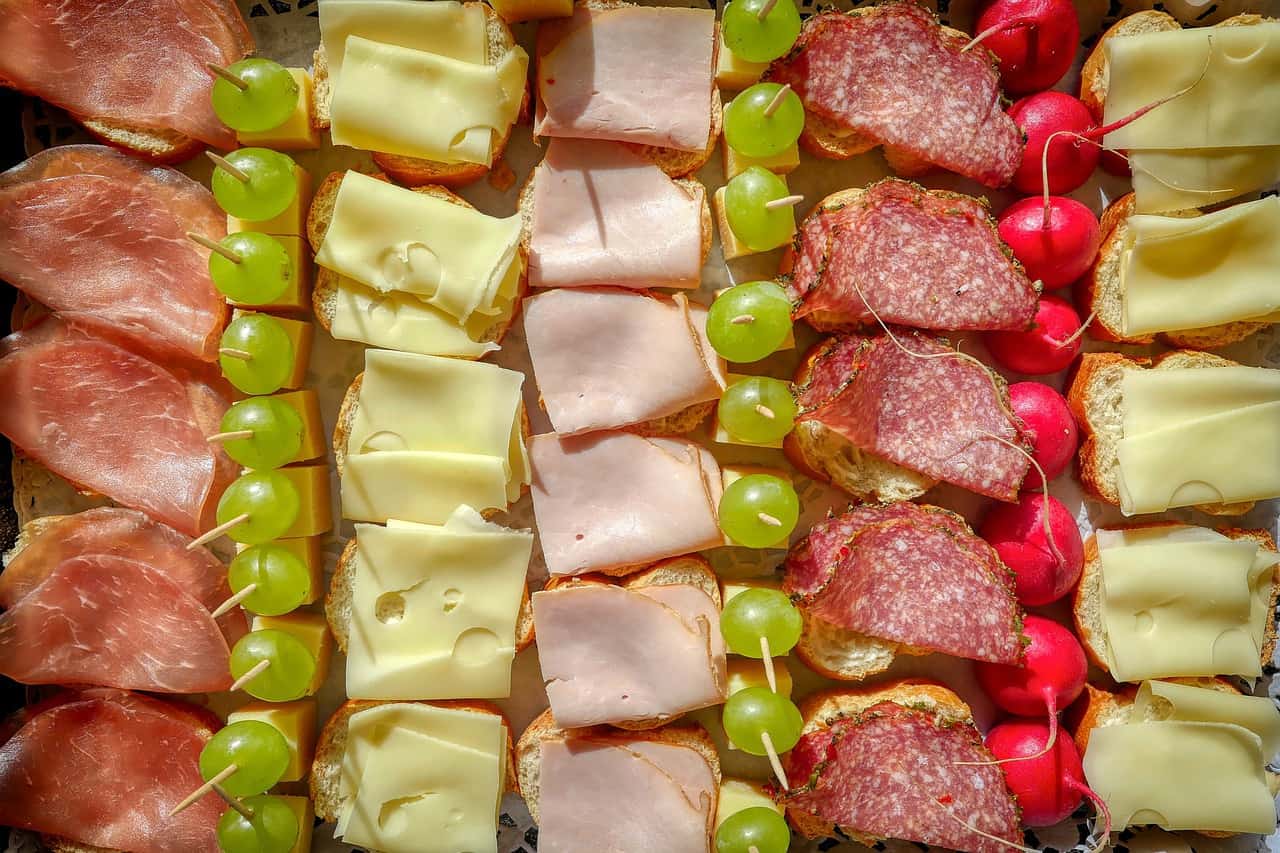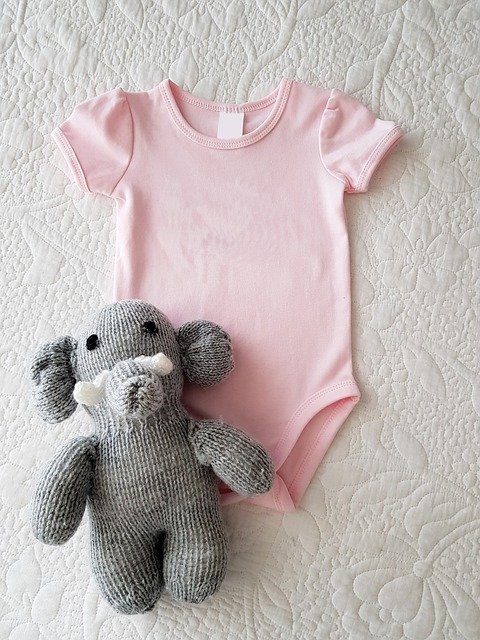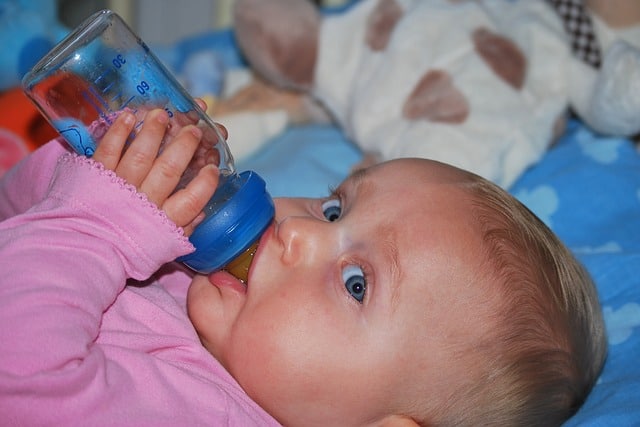Child Swallowed Coin – Timeline for Passing
Swallowing a non-food solid object, such as a coin, can be a worrying experience for parents. While most swallowed coins pass through the digestive system without causing harm, it is essential to understand the potential risks and know how to manage the situation effectively. In this article, I will provide valuable insights into the timeline for a swallowed coin to pass, the types of objects children may swallow, the risks involved, symptoms to watch out for, and the appropriate treatment options.
Key Takeaways:
- Most swallowed coins pass through the digestive system without causing harm.
- Coins, toy parts, button batteries, magnets, and sharp objects are common non-food objects children may swallow.
- Risks associated with swallowed coins include blockages, burns, and punctures.
- Symptoms of a swallowed coin can include difficulty swallowing, pain, and decreased appetite.
- Treatment options vary based on the individual case, but medical attention is necessary.
Types of Objects Swallowed by Children
When it comes to non-food objects swallowed by children, coins are the most common culprits. However, not all coins pose the same level of risk. While most swallowed coins are usually safe, quarters can be more problematic due to their larger size. It’s important for parents to be aware of the range of objects that children may swallow to ensure their safety and well-being.
Aside from coins, there are several other types of objects that children may accidentally swallow. These objects can vary in size, shape, and potential harm they may cause. Here are some examples:
- Small blunt objects like toy parts and buttons
- Button batteries, which require urgent removal
- Magnets, which can cause serious complications
- Sharp or pointed objects like needles or toothpicks
In addition to these objects, large food chunks can also become stuck in the digestive tract, primarily in adults. This can lead to discomfort and potential complications. Therefore, it’s important to be cautious and supervise children while they eat, ensuring they take appropriate bites and chew their food thoroughly.
It’s crucial for parents and caregivers to be vigilant in creating a safe environment and understanding the potential risks associated with objects that children may swallow. Educating children about the importance of not putting non-food items in their mouths can help prevent accidental ingestions.
Risk Comparison
| Object | Risk Level |
|---|---|
| Coins | Low to moderate |
| Quarters | Higher |
| Small blunt objects | Low |
| Button batteries | High |
| Magnets | High |
| Sharp objects | High |
| Food chunks | Low (primarily in adults) |
Although the risk levels may vary, it’s important to remember that any object swallowed by a child should be taken seriously. Seeking medical attention and contacting healthcare professionals is always recommended to ensure the best outcome for the child’s health and well-being.
Risks of Swallowed Coins
While most swallowed coins pass through the digestive system safely, there are some risks associated with this incident. Coins that are 1 inch or larger in diameter, including quarters, can get stuck in the esophagus, causing symptoms like trouble swallowing, throat or chest pain, gagging, vomiting, drooling, and difficulty eating or drinking. Batteries and magnets can also pose serious risks if swallowed, leading to low-voltage burns, bowel punctures, or blockages. Additionally, sharp objects can become lodged in the digestive tract, potentially causing punctures.
When it comes to swallowed coins, the size and materials of the coin play a significant role in determining the potential risks. Quarters, which are larger and have jagged edges, are more likely to get lodged in the narrower esophagus. Ingesting batteries or magnets can be dangerous due to the chemicals or magnetic fields they emit when inside the body.
It’s crucial for parents and caretakers to be aware of these risks and take immediate action if a child swallows a coin or any other foreign object. Seeking medical attention promptly can prevent further complications and ensure proper care is provided.
In some instances, swallowed coins pass through the digestive system without causing any harm. However, it is important to be vigilant and monitor the situation closely for any symptoms or signs of distress. Prompt medical attention should be sought if the child experiences severe symptoms, or if there is uncertainty about the best course of action. A healthcare professional will be able to evaluate the situation and determine the appropriate treatment based on the individual case.
Signs of complications from swallowed coins
If a child has swallowed a coin, it’s important to watch for signs that may indicate potential complications. These signs can vary depending on the location of the coin and the individual child, but some common signs to look out for include:
- Difficulty swallowing
- Throat or chest pain
- Gagging
- Vomiting
- Drooling
- Difficulty eating or drinking
If any of these symptoms occur, it is recommended to seek immediate medical attention to prevent any further complications.
| Type of Object | Potential Risks |
|---|---|
| Coins (1 inch or larger) | Risk of esophageal obstruction, leading to symptoms like trouble swallowing, throat or chest pain, gagging, vomiting, drooling, and difficulty eating or drinking. |
| Batteries and magnets | Risk of low-voltage burns, bowel punctures, or blockages if swallowed. |
| Sharp objects | Potential for punctures in the digestive tract if ingested. |
Symptoms of a Swallowed Coin
After a child swallows a coin, the presence of symptoms can vary depending on the location of the coin and the individual child. It’s important for parents to be vigilant and watch for any signs that may indicate a swallowed coin. Common symptoms of a swallowed coin may include:
- Difficulty swallowing: The child may experience difficulty swallowing food or fluids.
- Throat or chest pain: The child may complain of pain in their throat or chest.
- Gagging: The child may gag or have a sensation of something stuck in their throat.
- Vomiting: The child may vomit, especially if the coin is causing irritation or blockage.
- Drooling: The child may have excessive drooling due to difficulty swallowing or irritation caused by the coin.
- Decrease in appetite: The child may show a decreased interest in eating due to discomfort or pain.
If the swallowed coin becomes lodged in the esophagus, these symptoms may be more pronounced and urgent medical attention should be sought. It is important to remember that not all children will exhibit the same symptoms, and some may not show any symptoms at all.
Treatment for Swallowing a Coin
The treatment for swallowing a coin depends on the individual case and the presence of symptoms. In some cases, observation may be recommended, especially if the swallowed coin is small, smooth, and the child is not experiencing any symptoms. This allows the coin to pass naturally through the digestive system. However, close monitoring is necessary during this period.
If symptoms arise or the coin does not pass within a reasonable timeframe, further intervention may be required. In such cases, an X-ray may be done to locate the coin’s position within the body. This helps healthcare professionals determine the best course of action.
If the coin is causing symptoms or is in a location that poses a higher risk, endoscopy under general anesthesia may be performed to remove the coin. Endoscopy is a minimally invasive procedure that involves inserting a thin, flexible tube with a small camera down the throat to locate the coin and remove it using specialized instruments.
The decision for treatment should always be made by a qualified healthcare professional who will consider factors such as the child’s age, the size and location of the coin, and the presence and severity of symptoms.

| Treatment Options | Indications |
|---|---|
| Observation | – Small, smooth coin |
| X-ray | – Coin does not pass within expected timeframe – Symptoms arise |
| Endoscopy | – Coin causing symptoms – Coin in a high-risk location |
How to Help a Child Pass a Swallowed Coin
While treatment may be necessary in some cases, there are some measures parents can take to help a child pass a swallowed coin naturally. It is important to encourage the child to stay hydrated by giving them plenty of fluids. Maintaining a normal diet is generally considered safe unless advised otherwise by a healthcare professional. However, if the child is experiencing symptoms or if there is concern, it is best to consult a healthcare professional for guidance.
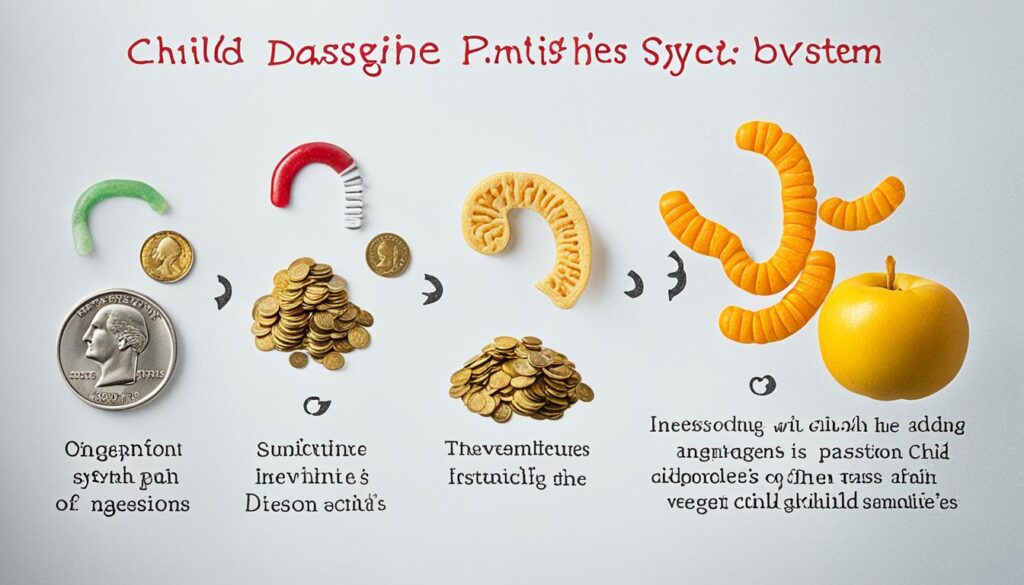
In most cases, a swallowed coin will pass through the child’s digestive system without causing any harm. To facilitate the process, it is crucial to ensure that the child stays well-hydrated. Drinking plenty of fluids can help lubricate the digestive tract and aid in the smooth passage of the coin. Encouraging the child to consume water, clear fluids, and non-acidic juices can help keep them hydrated.
Another important aspect is maintaining a normal diet, unless advised otherwise by a healthcare professional. A regular diet consisting of balanced meals can promote healthy bowel movements, assisting the coin in passing through the system smoothly. It is essential to ensure that the child is consuming an adequate amount of fiber to keep their stools soft and facilitate the passage of the coin.
However, it is crucial to note that if the child develops any symptoms or if there is a concern regarding the swallowed coin, seeking medical attention is always recommended. While most swallowed coins pass naturally without any complications, certain situations may require medical intervention. It is important to consult with a healthcare professional who can assess the situation and provide appropriate guidance based on the child’s specific circumstances.
When to Seek Medical Attention
Swallowing a coin can be a worrisome situation for parents, but it’s important to know when to seek medical attention. While most cases are not immediately life-threatening, complications can arise, especially if the coin becomes stuck in the child’s esophagus or if severe symptoms occur.
Immediate medical attention is necessary under the following circumstances:
- If the child is having trouble breathing
- If the child exhibits symptoms such as stridor or wheezing
- If there is a concern for a life-threatening emergency
- If the size of the swallowed coin is larger than 1 inch in diameter
- If the child is experiencing severe symptoms
- If there is uncertainty about the best course of action
It’s important to remember that only a healthcare professional can determine the appropriate course of action based on the specific situation. Seeking medical attention promptly ensures that the child receives the appropriate care and reduces the risk of complications.
Quote:
“When a child swallows a coin, it’s crucial to reach out to a healthcare professional for immediate attention. The presence of symptoms or uncertainty about the situation warrants prompt medical assessment to prevent any potential complications.” – Dr. Emily Thompson, Pediatrician
| Symptoms | When to Seek Medical Attention |
|---|---|
| Difficulty breathing | Immediate medical attention is necessary |
| Stridor or wheezing | Immediate medical attention is necessary |
| Concern for a life-threatening emergency | Immediate medical attention is necessary |
| Swallowed coin larger than 1 inch in diameter | Seek medical attention |
| Severe symptoms | Seek medical attention |
| Uncertainty about the best course of action | Seek medical attention |
Prevention and Safety Measures
Preventing swallowing incidents in children can be challenging, but there are some safety measures that can help reduce the risk. It is important to keep small objects out of reach, especially coins, batteries, magnets, and sharp objects.
Supervision and education are key in preventing accidental swallowing. Teaching children not to put non-food objects in their mouths and regularly checking the environment for potential hazards can also help prevent incidents. By creating a safe and child-friendly environment, parents can minimize the chances of their child swallowing a coin or any other object.
If a child does swallow a non-food object, it is important for parents and caregivers to remain calm and assess the situation. In cases where immediate medical attention is necessary, such as if the child is experiencing severe symptoms or if the object is causing a blockage, seeking prompt medical assistance is crucial. Healthcare professionals will guide you on the appropriate course of action, which may include X-rays, endoscopy, or other treatments.
FAQ
How long does it take for a swallowed coin to pass through a child’s digestive system?
The timeline for a swallowed coin to pass through a child’s digestive system can vary. In most cases, the coin will pass within 3 to 7 days. However, it is important to monitor the situation and seek medical attention if any symptoms occur.
What happens if a child swallows a coin?
Swallowing a coin is a common occurrence in children. In most cases, the coin will pass through the digestive system without causing harm. However, there can be risks involved, such as the coin becoming lodged in the esophagus or causing symptoms. It is important to seek medical attention if any concerns arise.
What types of non-food objects do children commonly swallow?
Children commonly swallow coins, small blunt objects like toy parts and buttons, button batteries, magnets, and sharp or pointed objects like needles or toothpicks. Large food chunks can also become stuck in the digestive tract, mainly in adults.
What are the risks of swallowed coins?
While most swallowed coins pass through the digestive system safely, there are some risks associated with this incident. Coins that are 1 inch or larger in diameter, including quarters, can get stuck in the esophagus and cause symptoms. Batteries and magnets can also pose serious risks if swallowed, leading to burns, punctures, or blockages. Sharp objects can become lodged in the digestive tract, potentially causing punctures.
What are the symptoms of a swallowed coin?
The presence of symptoms after a child has swallowed a coin can vary depending on the location of the coin and the individual child. Common symptoms may include difficulty swallowing, throat or chest pain, gagging, vomiting, drooling, and a decrease in appetite. Prompt medical attention should be sought if any of these symptoms occur.
What is the treatment for swallowing a coin?
The treatment for swallowing a coin depends on the individual case and the presence of symptoms. In some cases, observation may be recommended. In other cases, an X-ray may be done to locate the coin and determine the best course of action. If necessary, endoscopy under general anesthesia may be performed to remove the coin. The decision for treatment should be made by a healthcare professional.
How can I help a child pass a swallowed coin?
While treatment may be necessary in some cases, there are measures parents can take to help a child pass a swallowed coin naturally. Encouraging the child to stay hydrated by giving them plenty of fluids and maintaining a normal diet is generally considered safe. However, if the child is experiencing symptoms or if there is concern, it is best to consult a healthcare professional for guidance.
When should I seek medical attention if my child has swallowed a coin?
It is important to seek medical attention if a child has swallowed a coin. While most cases are not immediately life-threatening, swallowing a coin can lead to complications, especially if the coin becomes lodged in the esophagus or causes severe symptoms. Immediate medical attention is necessary if the child is having trouble breathing, has stridor or wheezing, or if there is a concern for a life-threatening emergency. Other reasons to seek medical attention include the size of the coin, age of the child, presence of severe symptoms, or if there is uncertainty about the best course of action.
How can I prevent my child from swallowing coins?
Preventing swallowing incidents in children can be challenging, but there are safety measures that can help reduce the risk. It is important to keep small objects out of reach, especially coins, batteries, magnets, and sharp objects. Supervision and education are key in preventing accidental swallowing. Teaching children not to put non-food objects in their mouths and regularly checking the environment for potential hazards can also help prevent incidents. If a child does swallow a non-food object, it is important to remain calm, seek medical attention if necessary, and follow the guidance of healthcare professionals.


